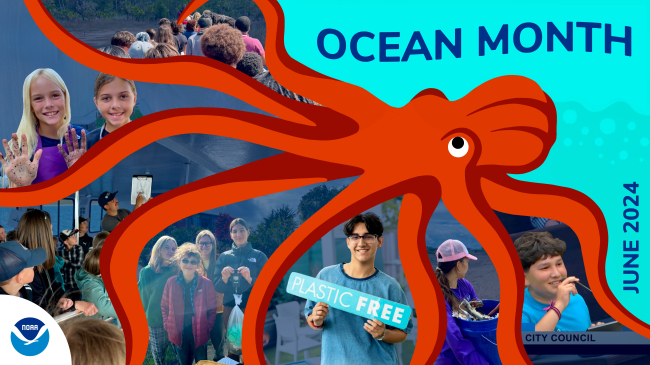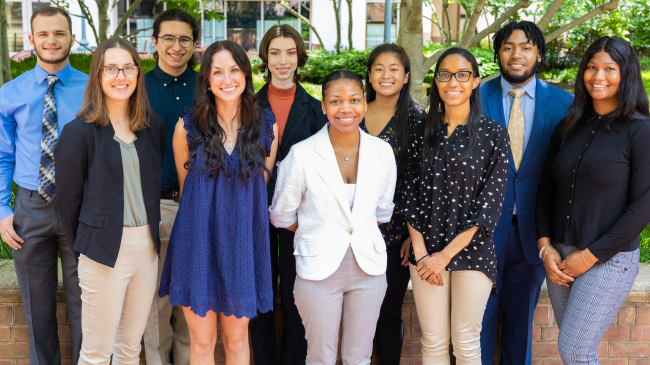October is National Seafood Month! Sustainable seafood plays an essential role in feeding the world's growing population.
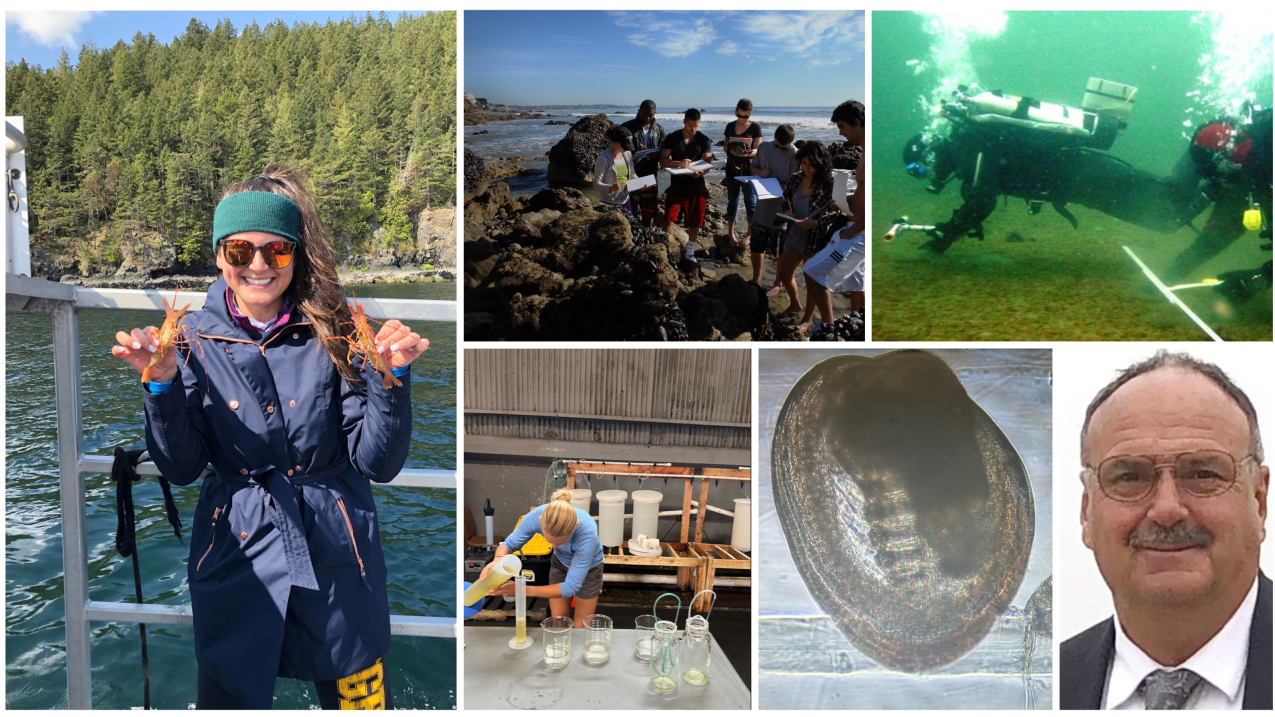
Seafood experts on the West Coast and in Canada participate in everything from seafood outreach, education, and training activities, to harvesting and researching seafood species. (Image credit: Courtesy of Seafood Month participants)
Throughout California and the Pacific Northwest, NOAA works closely with regional tribes, states, the aquaculture industry, and non-governmental organizations, as well as with our neighbors to the north in Canada.
California primarily grows Pacific oysters, Kumamoto oysters, and manila clams for commercial purposes. They also farm Mediterranean mussels, Atlantic oysters, red abalone, rock scallops, and seaweed. The Pacific Northwest region primarily grows oysters, mussels, clam, as well as Atlantic and Pacific salmon species. NOAA also works with partners to responsibly restore populations of native Olympia oysters, pinto abalone, and Pacific salmon. We'll also hear from a partner organization that supports access to sustainable seafood across North America.
Learn from experts in the California, Canada, and the Pacific Northwest regions about what they’re "cooking up" in the field, and in their own kitchens! For more information, visit NOAA Fisheries Office of Aquaculture’s Aquaculture on the West Coast page.
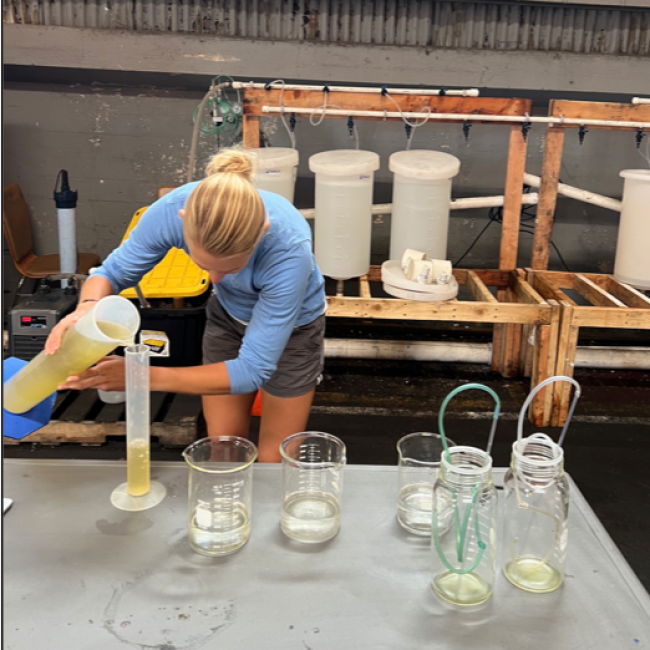
Nathan Churches
Co-owner and Chief Science Officer
Holdfast Aquaculture, LLC.
San Pedro, California
We are at a moment in history where we can set the standard for the future of sustainable ocean products.
Learn more about Nathan
In what ways are you connected to seafood? Is there a specific passion that drove you to do the work that you do today?
I am connected to seafood through academic research, entrepreneurship at Holdfast Aquaculture, and as a global citizen interested in (delicious) ocean foods. My cofounders at Holdfast Aquaculture and I all share a passion for the ocean and the food produced from it. Collectively, we've had just about every ocean-facing job: we’ve worked the salmon gutting lines of the Pacific Northwest, been fishmongers, boat captains, scuba divers, aquarists, seafood suppliers, and ocean research scientists.
Today, we're united under the common goal of producing low-trophic [level] sustainable aquaculture for the future. Using two grants from NOAA programs (Pacific States Marine Fisheries Commission offsite link and the Saltonstall-Kennedy Program), in collaboration with the Nuzhdin Lab at the University of Southern California, and working with Santa Barbara Mariculture, we are working to develop ocean acidification-resistant strains of locally adapted mussels and develop the native California mussel for aquaculture production for the first time.
Both projects strive to generate commercial crops for farmers that are adapted not only to the Southern California region, but crops that will also be able to withstand the increasingly acidic oceans of the future. But it’s not enough to simply produce tasty, sustainable seafood, we also need to make sure all citizens have access to this nutritious stuff! Holdfast is working with several area researchers and Community Services Unlimited, a south-central Los Angeles-based nonprofit, to launch a “Seafood Hub” offsite link, where we are establishing a pipeline to deliver sustainable aquaculture products to communities that have historically not had access opportunities to these seafood varieties.
What's something unique about seafood in your region that makes it a fun sector to work or teach in?
The Pacific Southwest is at the very beginning of a revolution in sustainable seafoods. So much is happening in this region, from research and development of Integrated Multi-Trophic Aquaculture approaches and breeding strategies for ocean acidification tolerance, to seed banking efforts and novel commercial techniques and product development. Area institutions, such as Santa Monica College and MiraCosta College, are also soon to launch aquaculture training programs to supply a workforce for this burgeoning industry. So much is happening here — it's the place to be!
What's something you wish everyone knew about your work or your region?
Our area is rich with low-trophic [level] species to work with and develop for aquaculture, many of which have nourished native inhabitants since pre-colonial eras. We have such an excellent opportunity to get aquaculture in Southern California done right, because it’s nearly a blank slate. What we end up developing here in California may become the model for other emerging sustainable near-shore and offshore industries, both in the United States and around the globe. We are at a moment in history where we can set the standard for the future of sustainable ocean products.
While the fishers now use modern harvest practices, it is nice to take traditional knowledge and stories and see how it ties into the work we are doing today.
Learn more about Margaret
In what ways are you connected to seafood? Is there a specific passion that drove you to do the work that you do today?
I grew up in landlocked Colorado, but I always loved the ocean. I studied Marine Sciences at the University of Hawaiʻi at Hilo, where I learned about the traditional aquaculture practices Hawaiians used pre-colonization, and knew I wanted to do something that involved traditional food practices and fisheries management. Currently I work for the Nisqually Tribe as their shellfish harvest manager. While the fishers now use modern harvest practices, it is nice to take traditional knowledge and stories and see how it ties into the work we are doing today.
What's something unique about seafood in your region that makes it a fun sector to work or teach in?
Washington State fisheries management is unusual since the treaty Tribes and the State are required to work together to make management decisions. This leads to a dynamic and often challenging work environment.
What's something you wish everyone knew about your work or your region?
A lot of the shellfish species we manage can be very long-lived. Geoduck, one of the most economically valuable species we harvest in Washington, can live over 150 years. That means a geoduck you harvest today could have been around [in 1876] during the Battle of Little Bighorn (also known as Custer’s Last Stand) — or before Washington was a state!
![Mix the following together: a burgeoning aquaculture industry, a significant [lack] of skilled workers, input from United States West Coast industry players, and expertise from United States educators. After baking for a few years, you will see the emergence of a new Aquaculture Certificate Program, co-hosted by Santa Monica College and AltaSea. (Image credit: Courtesy of Ferris Kawar) Mix the following together: a burgeoning aquaculture industry, a significant [lack] of skilled workers, input from United States West Coast industry players, and expertise from United States educators. After baking for a few years, you will see the emergence of a new Aquaculture Certificate Program, co-hosted by Santa Monica College and AltaSea.](/sites/default/files/styles/square_width_650/public/2022-10/Students-on-beach.jpeg?h=f02cae24&itok=LoM8elEj)
Ferris Kawar
Sustainability Project Manager
Holdfast Aquaculture Partner
Santa Monica College
Santa Monica, California
There’s so much collaboration and synergy happening here between regulators, industry, and academia — the excitement is palpable!
Learn more about Ferris
In what ways are you connected to seafood? Is there a specific passion that drove you to do the work that you do today?
Our stakeholders in Southern California are paying close attention to the expansion of the Blue Economy, especially in regards to the revolutionary surge in our aquaculture industry. Notably, there is a serious lack of skilled workers to help support this rapidly expanding sector. Santa Monica College is meeting this challenge, and is proud to announce the launch of an Aquaculture Certificate Program (ACP) in 2023.
The ACP was developed with input from all of the major aquaculture entities in our region, in collaboration with AltaSea, a local nonprofit focusing on revolutionizing Los Angeles’ Blue Economy, and with program priorities written by professionals with extensive industry and academic experience. The ACP will utilize the Santa Monica College campus, AltaSea’s new educational facilities, and several intern-hosting area businesses. Courses are designed to develop the real hands-on and on-boat skills required for a job in this industry. At Santa Monica College, we see the ACP as a way to evolve our educational initiatives and community opportunities in tandem with area business developments.
What's something unique about seafood in your region that makes it a fun sector to work or teach in?
Southern California is poised for a significant expansion of the local aquaculture industry. There’s so much collaboration and synergy happening here between regulators, industry, and academia — the excitement is palpable! Great work is getting done. Much of this enthusiasm stems from NOAA’s recent designation of an Aquaculture Opportunity Area in our coastal waters. This designation jumpstarted entrepreneurship in the area, but also highlighted a need for experienced aquaculture workers in the industry. Santa Monica College and AltaSea will facilitate the development of this industry by providing the next generation of aquaculture trainees in our Aquaculture Certificate program, launching in 2023.
What's Ferris's favorite recipe? Mix the following together: a burgeoning aquaculture industry, a significant [lack] of skilled workers, input from United States West Coast industry players, and expertise from United States educators. After baking for a few years, you will see the emergence of a new Aquaculture Certificate Program, co-hosted by Santa Monica College and AltaSea.
What's something you wish everyone knew about your work or your region?
It’s no secret: living in Southern California is expensive, and lifestyles that revolve around the ocean are often associated with only the wealthiest and most privileged people. A career in aquaculture and the ocean sciences is a fantastic way for people of all backgrounds to achieve that “beach life” without the associated real estate price tag. This represents an advantage for the individual worker and society alike: the more people that are living a lifestyle engaged with the natural environment, the more capable our society will be when it comes to facing the continued challenges of climate change.
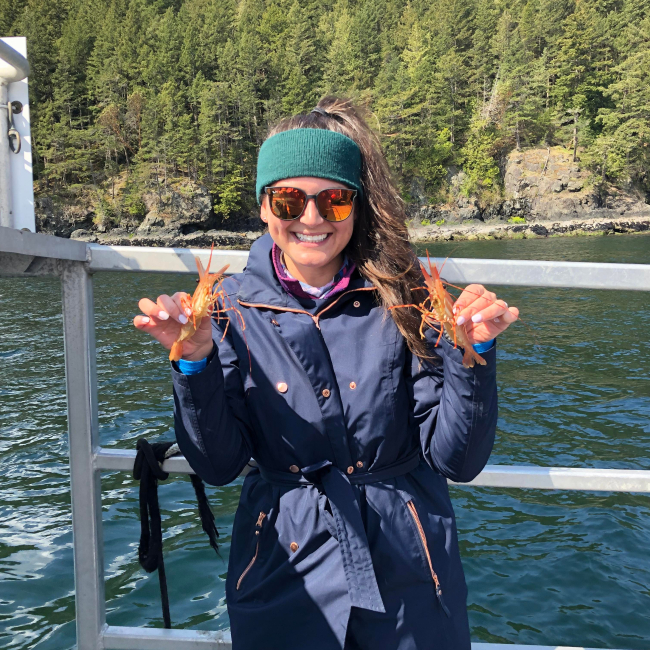
Kayla Menu-Courey
Partner Relations Specialist
Ocean Wise Seafood
Coastal Ecosystem Learning Centers member
Headquarters in Vancouver, British Columbia, Canada
Here, every [seafood] dish has a story, fusing international cuisine with local flavors from the land and seas.
Learn more about Kayla
In what ways are you connected to seafood? Is there a specific passion that drove you to do the work that you do today?
I completed my studies in marine biology for eight years in the Canadian Maritimes. I worked alongside international experts from the government, the fisheries and seafood industry, and academia to develop synergistic partnerships based on common goals and complementary expertise.
[At Ocean Wise], I recognized the gap between the scientific world and fishing and farming communities that rely on deep collaborations to conduct relevant and impactful research. Ever since, I’ve been working to bridge that gap through solutions- and action-focused initiatives for the ocean. As Partner Relations Specialist for Ocean Wise Seafood, my core work is to transform fisheries and aquaculture science into positive action across the seafood supply chain. I collaborate with businesses world-wide to help them support sustainable seafood systems and better communicate seafood and ocean solutions to their clients and end-consumers. Through Ocean Wise recommendations and educational projects, I connect like-minded businesses, guiding them and consumers to act now for the ocean.
What's something unique about seafood in your region that makes it a fun sector to work or teach in?
In the urgent need to protect marine environments, the fishing, aquaculture, and seafood sectors are evolving rapidly to become more sustainable. Collaboration between scientists, conservationists, First Nations communities, and industry stakeholders is needed to ensure healthy oceans for future generations. It's important for seafood businesses and restaurants in Quebec, for example, to support local fishers and farmers. Here, every dish has a story, fusing international cuisine with local flavors from the land and seas. It’s inspiring to work with players across the seafood supply chain who are committed to sourcing Ocean Wise recommended seafood. Over a single year, our everyday choices can have a significant impact on ocean ecosystems. That’s why it is so important to act now for the ocean. Businesses and seafood lovers can work together to demonstrate their support of sustainable fisheries and farms by choosing seafood that meet the highest standard of sustainability.
What's something you wish everyone knew about your work or your region?
The St. Lawrence Estuary near Tadoussac, Quebec, is brimming with life, from whales, seals, birds, and fish to mysterious deep-sea creatures. Waters from the rivers and the ocean meet in the region, mixing to create a dynamic marine ecosystem. Thirteen whale species — including blue whales — and more than 2,000 plant and animal species call the estuary home. This makes this region a top scuba diving site. St. Lawrence Estuary and the Saguenay Fjord have been protected since 1998 under Parks Canada and Parks Quebec as a marine park. People from around the world visit to explore the region’s abundant marine diversity.
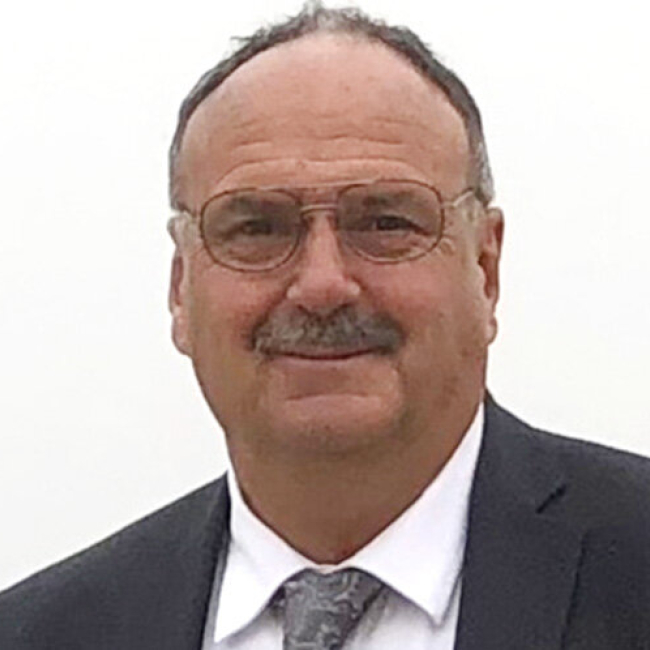
Peter Struffenegger
Director of North American Operations at Urchinomics
Former General Manager of Sterling Caviar, LLC.
Industry Partner to California Sea Grant College Program offsite link
Port Hueneme, California
When I was in school, I was fascinated that entire grocery stores of products came from farms and ranches, except for the seafood section.
Learn more about Peter
In what ways are you connected to seafood? Is there a specific passion that drove you to do the work that you do today?
When I was in school, I was fascinated that entire grocery stores of products came from farms and ranches, except for the seafood section. At that time, only about 10% of the items in the seafood counter came from aquaculture. In my mind, how could this divide in our sources of food exist, and wouldn't similar forces that drove us from hunters and gatherers to farming and ranching eventually come to seafood? And it has.
What's something unique about seafood in your region that makes it a fun sector to work or teach in?
I have had a unique experience in aquaculture to be involved in three different species, taking them from the wild, figuring out their biology, and researching how to domesticate them. I started working with white sturgeon and giant keyhole limpets, and most recently I am involved in figuring out how to ranch the purple sea urchin. Our [California] region is unique because we have both fresh and saltwater opportunities.
What's something you wish everyone knew about your work or your region?
I wish more people would know that aquaculture exists virtually in their neighborhoods, and also spread throughout [California] in industrial and rural areas, and large-scale and small-scale technology on farms. [California] probably has the most diverse range of cultured species of any other state and a fairly unique way of niche marketing those products.
Quick and easy California mussels, courtesy of Nathan Churches
|
|
Directions
Add all your ingredients into a large pot.
Steam them until the mussel shells open up.
Serve with your favorite bread. You can't really mess this recipe up!
Seafood tips and tricks, courtesy for Kayla Menu-Courey
K.I.S.S. – is my favorite acronym for “Keep It Simple, Silly.”
That’s my guide when cooking seafood. I particularly love land-raised trout from recirculating aquaculture systems, grown right here in North America! I add salt, pepper, and sprinkle on some Espelette pepper flakes and put it on the BBQ or in the oven. Served on a fresh salad with garden tomatoes, oil and lemon juice. Enjoy!
Sturgeon caviar, courtesy of Peter Struffenegger
|
|
|
|
|
|
Directions for crème fraîche
Mix buttermilk with heavy whipping cream in a glass bowl.
Stir and let sit at room temperature in the glass bowl, covered.
Let sit for 1-2 days, stirring in between until it has thickened.
Directions for blinis
Once your crème fraîche is ready, combine flour, salt, and baking powder in a bowl.
In a separate bowl, whisk all milk, egg, and melted butter together.
Mix milk, egg, and butter mixture into the flour mixture until the batter is fully combined.
Heat the remaining butter in a large skillet over medium-low heat.
Spoon in the batter a little at a time onto the skillet, like making small pancakes 1-2" in diameter.
Cook 1.5 - 2 minutes until bubbles form, then flip.
Cook until brown and remove onto a paper towel to absorb the excess butter.
Directions for Sturgeon caviar
Hard boil your eggs and separate the yolk from the white, chopping each up finely, keeping them separate.
Finely chop up your red onion and prepare your capers if desired.
Open your refrigerated farmed White Sturgeon caviar, spoon some of your crème fraîche onto a blini.
Top with your choice of egg yolk, egg white, red onion, and capers.
Top it all off with your caviar, and enjoy!




